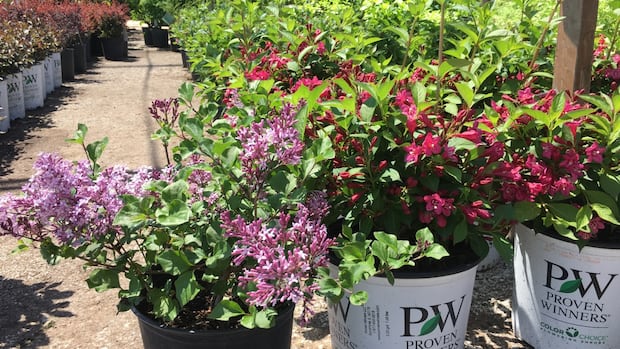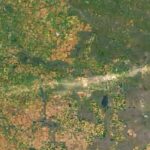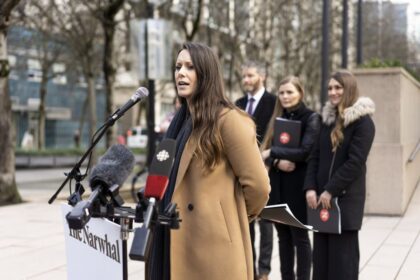PEINew plant hardiness zones have taken root across Canada, meaning some Prince Edward Island gardeners may be able to grow plants that previously wouldn’t have flourished in the province.’The bigger picture here is quite a concerning phenomenon,’ says research scientistMarilee Devries · CBC News · Posted: Sep 07, 2025 5:00 AM EDT | Last Updated: September 7’It’s fun to think about some of the new planting opportunities that come with changing hardiness zones, but we shouldn’t lose sight of the fact that likely what [is] driving these changes is climate change,’ says research scientist John Pedlar. (Sara Fraser/CBC)New plant hardiness zones have taken root across Canada, meaning some Prince Edward Island gardeners may be able to grow plants that previously wouldn’t have flourished in the province. This, according to the latest Plant Hardiness Zones map, which recently got its first update in more than a decade. The map was developed in the 1960s. It is a guide for Canadians on which plants can grow where, based on temperature, precipitation and other weather patterns. “The plant hardiness in P.E.I. has for the most part increased,” said John Pedlar, research scientist at the Great Lakes Forestry Centre in Sault Ste. Marie, Ont. The centre is part of Natural Resources Canada, which publishes the map.Canada’s plant hardiness zone map has been updated for the first time since 2014. (Natural Resources Canada)The map has zones from 0 to 9, and each zone is divided into ‘A’ and ‘B’ subzones. Zone 0 covers the coldest parts of Canada, where only the hardiest plants can grow, while zone 9 covers the warmest regions in the country, where a wider variety of plants can grow.The new data shows that the Summerside area has increased by half a zone, from 5A to 5B. Charlottetown, meanwhile, saw no change; it remains a 5B. Growing season lengths have increased and winter temperatures have increased and those are what are causing the increases in hardiness ratings.— John Pedlar”Although I would note that its index value has increased from 55 to 59,” said Pedlar. “At 60, it moves into zone 6A, so it’s right on the verge of 6A.”Southeastern P.E.I. has seen the biggest change, though, with some places increasing a full zone to 6A. Pedlar said the main drivers of the change are temperature-related variables, “in particular growing season lengths have increased and winter temperatures have increased and those are what are causing the increases in hardiness ratings.”Climate change reshaping growing zonesAs for why a small province like P.E.I. would see a full zone change in only one area?”Climate and weather are complex phenomena that are driven by things like ocean proximity, topography, elevation, a number of things,” said Dan McKenney, research scientist and director of the integrated ecology and economics division at the Great Lakes Forestry Centre. “So these reflect the subtleties that the Island is part of.”Research scientists John Pedlar, left, and Dan McKenney, right, worked together to compile the first update to Canada’s Plant Hardiness Zone map in more than a decade. (Natural Resources Canada)Much of the change is thanks to climate change, said Pedlar.”You know, it’s fun to think about what new species will grow in our area. But we shouldn’t lose sight of the fact that the bigger picture here is quite a concerning phenomenon that’s projected to have a lot of negative impacts on both natural and human systems.”Canada’s warming climate has become suitable for different plantsAn update to Canada’s plant hardiness zones shows that growing conditions have changed throughout the country as the climate warms, including regions that can now support some citrus trees and palm species.Changing zones across the country Nationally, the researchers say about 80 per cent of Canada has seen zone increases because of warming temperatures.”We’re seeing the biggest changes in western Canada, where we’re seeing changes of up to two full zones,” said Pedlar. The hardiness zones are based on long-term, 30-year averages and a number of variables, including: The lowest average daily temperature in the region’s coldest month. The length of frost-free periods. The rainfall totals from June to November. The highest average daily temperature during the zone’s hottest month. The severity of winter. The average maximum snow depth and wind gust over the past 30 years. New plants, new pestsAnother thing McKenney says Island gardeners should keep in mind is that new pests may come along for the ride.Researchers say new pests may crop up as new plants are cultivated due to hardiness zones across Canada increasing, with one example being the spotted lanternfly. The invasive species can have a devastating impact on grapevines and fruit trees, among other plants. (Stephen Ausmus/United States of America Department of Agriculture/Flickr)”As well as having new plants being able to grow at your location, a lot of times the pests also come with it from those warmer climates,” he said.”We do hear about expanding pests, things like the spotted lanternfly that, you know, are probably headed our way as well.”ABOUT THE AUTHORMarilee Devries is a journalist with CBC P.E.I. She has a journalism degree from Toronto Metropolitan University. She can be reached at marilee.devries@cbc.caWith files from Jackie Sharkey
P.E.I. gardeners, take note: Your plant hardiness zone may have changed











